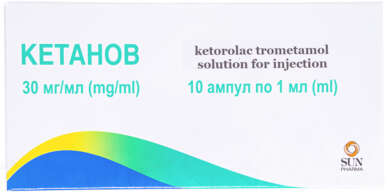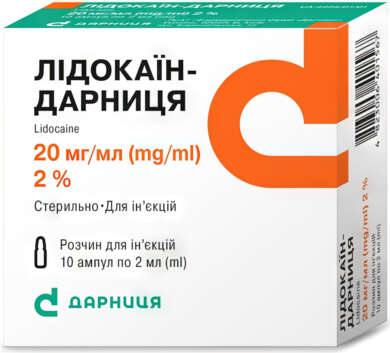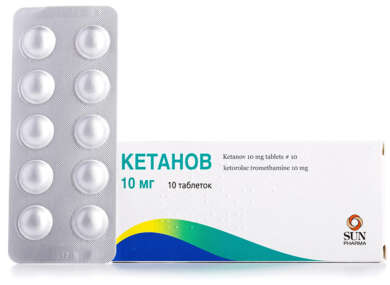Description
Buy Bupivacaine Solution for injection 5 mg / ml 10 ml #10
Description of Bupivacaine Solution for injection 5 mg / ml 10 ml:
The active substance of the drug is bupivacaine, a long-acting local anesthetic of the amide type with anesthetic and analgesic effects. At high doses, surgical anesthesia is achieved, while low doses lead to sensory blockade (analgesia), which is accompanied by less pronounced motor blockade. The onset and duration of the local analgesic effect depends on the dose and site of administration of the drug. The most significant property of bupivacaine is the long duration of its effect. The difference between the duration of effect of bupivacaine with and without epinephrine is relatively small. Bupivacaine is particularly suitable for long-term epidural blockade. Lower concentrations may be suitable for long-term pain relief, such as during childbirth or in the postoperative period.
Ingredients:
Active ingredient: bupivacaine hydrochloride; 1 ml of solution contains bupivacaine hydrochloride monohydrate in terms of bupivacaine hydrochloride 5 mg;
Excipients: sodium chloride, water for injection.
Pharmacodynamics of Bupivacaine Solution for injection 5 mg / ml 10 ml:
Bupivacaine hydrochloride is a long-acting local anesthetic of the amide type with anesthetic and analgesic effects. At high doses, surgical anesthesia is achieved, while at lower doses, sensory blockade (analgesia) is achieved, which is accompanied by less pronounced motor blockade.
The onset and duration of the local analgesic effect of bupivacaine depends on the dose and site of administration of the drug.
Bupivacaine, like other local anesthetics, reversibly blocks the conduction of impulses in nerve fibers by inhibiting the transport of sodium ions across the cell membranes of nerve fibers. Sodium channels in nerve membranes contain receptors for fixing local anesthetic molecules.
Local anesthetics can have a similar effect on other excitable membranes, such as those in the brain and myocardium. In the event that an excessive amount of the drug reaches the systemic circulation, symptoms and signs of toxicity may appear, which originate from the central nervous and cardiovascular systems.
Signs of developing toxic effects on the central nervous system (CNS) usually precede cardiovascular effects, since signs of toxic effects on the central nervous system are observed at lower plasma concentrations of the drug. The direct cardiac effects of local anesthetics include delayed conduction, negative inotropism, and finally cardiac arrest.
Indirect cardiovascular effects (hypotension, bradycardia) may develop after epidural blockade, depending on the degree of concomitant sympathetic blockade.
Pharmacokinetics of Bupivacaine Solution for injection 5 mg / ml 10 ml:
Bupivacaine has a pKa value of 8.2 and a partition coefficient of 346 (25°C n-octanol/phosphate buffer at pH 7.4). Metabolites have pharmacological activity, but less than that of bupivacaine.
The plasma concentration of bupivacaine depends on the dose, the route of administration and the vascularization of the injection site.
Bupivacaine exhibits complete and biphasic absorption from the epidural space with half-lives of approximately 7 minutes and 6 hours, respectively. Slow absorption is the rate-limiting factor in the elimination of bupivacaine and explains why the apparent terminal half-life after epidural administration is longer than after intravenous administration.
The total plasma clearance of bupivacaine is 0.58 l / min, the volume of distribution at steady state is 73 l, the terminal half-life is 2.7 hours and the intermediate hepatic extraction coefficient is 0.38 after intravenous administration of the drug.
Bupivacaine binds in plasma mainly to alpha-1-acid glycoprotein, the bound fraction is 96%. Bupivacaine clearance is almost entirely dependent on hepatic metabolism and is more sensitive to changes in intrinsic hepatic enzyme activity than to hepatic perfusion.
Warnings and Safety for use of Bupivacaine Solution for injection 5 mg / ml 10 ml:
There are reports of cases of cardiac arrest during the use of bupivacaine for epidural anesthesia or blockade of peripheral nerves. In some cases, resuscitation was complicated and long-term resuscitation was required to achieve a positive response from the patient. In some cases, resuscitation has proven impossible despite apparently adequate training and appropriate therapy.
Like all local anesthetics, bupivacaine in cases where the use of the drug for the purpose of local anesthesia leads to the formation of high concentrations of the drug in the blood, can cause the development of acute toxic effects from the central nervous and cardiovascular systems. This applies in particular to cases that develop after accidental intravascular administration of the drug or injection of the drug into highly vascularized areas. Cases of ventricular arrhythmia, ventricular fibrillation, sudden cardiovascular failure and death have been reported in association with high systemic concentrations of bupivacaine.
Regional anesthesia is often the optimal method of administering anesthesia. But some patients, in order to reduce the risk of developing unwanted side effects, require special attention:
- Elderly patients and patients with a weakened general state of health need to reduce the dose of the drug, comparable to their physical condition;
- Patients with partial or complete heart block – due to the fact that local anesthetics can inhibit myocardial conduction;
- Patients with advanced liver disease or severe renal dysfunction;
- Patients in the late stages of pregnancy;
- Patients taking class III antiarrhythmic drugs (eg, amiodarone) should be closely monitored by staff, and ECG monitoring should also be performed, since the cardiac effects of drugs may be additive.
Indications for use of Bupivacaine Solution for injection 5 mg / ml 10 ml:
Bupivacaine is used for local anesthesia by percutaneous infiltration, peripheral nerve block(s) and central neural block (caudal or epidural), that is, it is used by a specialist in situations where long-term anesthesia is required. Because sensory nerve block is more severe than motor block, bupivacaine is particularly effective for pain relief, such as during childbirth.
Contraindications of Bupivacaine Solution for injection 5 mg / ml 10 ml:
Hypersensitivity to local anesthetics of the amide type or to other components of the drug.
Bupivacaine is not used for intravenous regional anesthesia (Bier’s block). Bupivacaine is not used for epidural anesthesia in patients with severe arterial hypotension, for example, in the case of cardiogenic or hypovolemic shock. Epidural anesthesia, regardless of the local anesthetic that is used, has its own contraindications, which include:
- diseases of the nervous system in the active stage: meningitis, poliomyelitis, intracranial hemorrhage, subacute combined degeneration of the spinal cord due to pernicious anemia and tumors of the brain and spinal cord;
- spinal tuberculosis;
- purulent infection of the skin at or near the site of the lumbar puncture;
- bleeding disorder or current anticoagulant treatment.
Interactions:
Because systemic toxic effects are additive, bupivacaine should be used with caution in patients receiving other local anesthetics or drugs that are structurally similar to amide-type local anesthetics, such as certain antiarrhythmic drugs such as lidocaine and mexiletine. Specific studies of interactions between bupivacaine and class III antiarrhythmic drugs (for example, amiodarone) have not been conducted, however, in this case, caution is recommended (see section “Peculiarities of use”).
Acute systemic toxicity
Systemic toxic reactions mainly affect the central nervous system and the cardiovascular system. The occurrence of such reactions is due to the high concentration of local anesthetics in the blood, which may be due to (accidental) intravascular administration of the drug, overdose, or extremely rapid absorption from highly vascularized areas (see section “Peculiarities of use”). CNS reactions are similar for all local anesthetics of the amide type, while cardiac reactions are more dependent on the type of drug, both quantitatively and qualitatively.
The toxic effect on the CNS is a gradual reaction with symptoms and signs that are accompanied by an increase in severity. Initial symptoms include mild dizziness, perioral paresthesia, numbness of the tongue, hyperacusis, tinnitus, and blurred vision. Dysarthria, muscle rigidity, and tremor are more serious symptoms and may precede the onset of generalized seizures. These signs should not be mistaken for neurotic behavior. This may be followed by loss of consciousness and a grand mal seizure, which can last from a few seconds to several minutes. During convulsions, oxygen deprivation and hypercapnia rapidly develop due to increased muscle activity, along with respiratory failure and possible deterioration of airway function. In severe cases, sleep apnea may develop. The development of acidosis, hyperkalemia and oxygen deficiency increases and prolongs the toxic effects of local anesthetics.
Recovery occurs due to redistribution of the local anesthetic outside the CNS and further metabolism and excretion. Recovery may be rapid unless large amounts of the drug have been administered.
In severe cases, there may be a toxic effect on the cardiovascular system. As a rule, the toxic effect of the drug on the cardiovascular system is preceded by signs of the development of the toxic effect of the drug on the central nervous system. Prodromal CNS symptoms may not occur in patients who are under the influence of strong sedative drugs or receive a drug for general anesthesia. As a result of high systemic concentrations of local anesthetics, arterial hypotension, bradycardia, arrhythmia, and even cardiac arrest can develop, but in rare cases, cardiac arrest was observed without prodromal effects from the CNS.
Application Features
There are reports of cases of cardiac arrest during the use of bupivacaine for epidural anesthesia or blockade of peripheral nerves. In some cases, resuscitation was complicated and long-term resuscitation was required to achieve a positive response from the patient. In some cases, resuscitation has proven impossible despite apparently adequate training and appropriate therapy.
Like all local anesthetics, bupivacaine in cases where the use of the drug for the purpose of local anesthesia leads to the formation of high concentrations of the drug in the blood, can cause the development of acute toxic effects from the central nervous and cardiovascular systems. This applies in particular to cases that develop after accidental intravascular administration of the drug or injection of the drug into highly vascularized areas. Cases of ventricular arrhythmia, ventricular fibrillation, sudden cardiovascular failure and death have been reported in association with high systemic concentrations of bupivacaine.
Appropriate resuscitation equipment should be available at all times during local or general anesthesia. The responsible physician must take the necessary precautions to avoid intravascular administration of the drug. Before starting any blockade anesthesia, it is necessary to provide access for intravenous administration of drugs for the purpose of resuscitation. Physicians should receive an appropriate and sufficient level of training to perform the procedure and should be familiar with the diagnosis and treatment of side effects, systemic toxicity, or other complications.
Blockade of large peripheral nerves may require the use of large volumes of local anesthetic in highly vascularized areas, often near large vessels, where there is an increased risk of intravascular injection and / or systemic absorption. This can lead to the formation of high concentrations of the drug in the blood plasma.
Overdose or accidental intravenous administration of the drug can lead to the development of toxic reactions.
Due to the slow accumulation of bupivacaine hydrochloride, administration of repeated doses can lead to a significant increase in blood levels of the drug with each repeated dose. Tolerability of the drug changes simultaneously with the patient’s condition.
Although regional anesthesia is often the optimal method of anesthesia, some patients require special attention in order to reduce the risk of unwanted side effects:
- Elderly patients and patients with a weakened general state of health need to reduce the dose of the drug comparable to their physical condition;
- Patients with partial or complete heart block – due to the fact that local anesthetics can inhibit myocardial conduction;
- Patients with advanced liver disease or severe renal dysfunction;
- Patients in the late stages of pregnancy;
- Patients taking class III antiarrhythmic drugs (eg, amiodarone) should be closely monitored by staff, and ECG monitoring should also be performed, since the cardiac effects of drugs may be additive;
- Patients allergic to ester-type local anesthetics (procaine, tetracaine, benzocaine, etc.) did not show cross-sensitivity to amide-type drugs such as bupivacaine.
Some procedures involving local anesthesia can lead to serious adverse reactions, regardless of the type of local anesthetic used.
Overdose of Bupivacaine Solution for injection 5 mg / ml 10 ml:
In the case of an overdose, a toxic effect on the central nervous system occurs, which is a gradual reaction with symptoms and signs that are accompanied by an increase in severity. The following symptoms are observed:
- Mild dizziness, perioral paresthesia, numbness of the tongue, hyperacusis, tinnitus and blurred vision;
- Dysarthria, muscle rigidity, and tremor, which are more serious symptoms and may precede the onset of generalized seizures. These signs should not be mistaken for neurotic behavior;
- This may be followed by loss of consciousness and a grand mal seizure, which can last from a few seconds to several minutes. During convulsions, oxygen deprivation and hypercapnia rapidly develop due to increased muscle activity, along with respiratory failure and possible deterioration of airway function. In severe cases, sleep apnea may develop;
- The development of acidosis, hyperkalemia and oxygen deficiency increases and prolongs the toxic effects of local anesthetics.
In severe cases, there may be a toxic effect on the cardiovascular system. As a rule, the toxic effect of the drug on the cardiovascular system is preceded by signs of the development of the toxic effect of the drug on the central nervous system. Prodromal CNS symptoms may not occur in patients who are under the influence of strong sedative drugs or receive a drug for general anesthesia. As a result of high systemic concentrations of local anesthetics, arterial hypotension, bradycardia, arrhythmia, and even cardiac arrest can develop, but in rare cases, cardiac arrest was observed without prodromal effects from the CNS.
Treatment of acute toxicity
If signs of acute systemic toxicity occur, the use of the local anesthetic should be discontinued immediately.
Treatment of a patient with signs of systemic toxicity should be aimed at rapidly stopping seizures and providing adequate ventilation with oxygen, if necessary, to facilitate or control ventilation (respiration) of the lungs.
Once seizures are controlled and adequate ventilation is achieved, there is usually no need for other treatment.
In case of depression of cardiovascular function (arterial hypotension, bradycardia), appropriate treatment with intravenous fluid, vasopressor, inotropes and / or lipid emulsion should be considered.
When treating symptoms of toxicity in children, doses appropriate for their age and body weight should be used.
In the event of circulatory arrest, cardiopulmonary resuscitation should be initiated immediately. Maintaining proper levels of oxygenation, ventilation and circulation, and treating acidosis are vital.
Bupivacaine-induced cardiac arrest may be resistant to electrical defibrillation, so active resuscitation should be continued over an extended period of time.
Signs of extensive or complete spinal block leading to the development of respiratory paralysis and arterial hypotension during epidural anesthesia should be treated by establishing and maintaining an open airway, and oxygen should be provided to facilitate or control ventilation.
Side effects:
Accidental administration of the drug into the subarachnoid space can lead to the development of a very high degree of spinal anesthesia, possibly with apnea and severe hypotension.
The adverse reaction profile of Bupivacaine is similar to that seen with other long-acting local anesthetics. Adverse reactions caused by the drug itself are difficult to distinguish from the physiological effects of nerve blockade (eg, lowering blood pressure, bradycardia), as well as events caused directly (eg, nerve injury) or indirectly (eg, epidural abscess) by needle puncture.
Neurological damage is a rare but well-known consequence of regional, especially epidural and spinal, anesthesia. They may be due to several causes, such as direct trauma to the spinal cord or spinal nerves, anterior spinal artery syndrome, injection of an irritant, or injection of a non-sterile solution. This can lead to localized paresthesia or anesthesia, motor weakness, loss of sphincter control, and paraplegia. Sometimes these phenomena are long-term.
Storage:
Store below 25°C in original packaging. Keep out of the reach of children.
Shelf life:
2.5 years.






Reviews
There are no reviews yet.